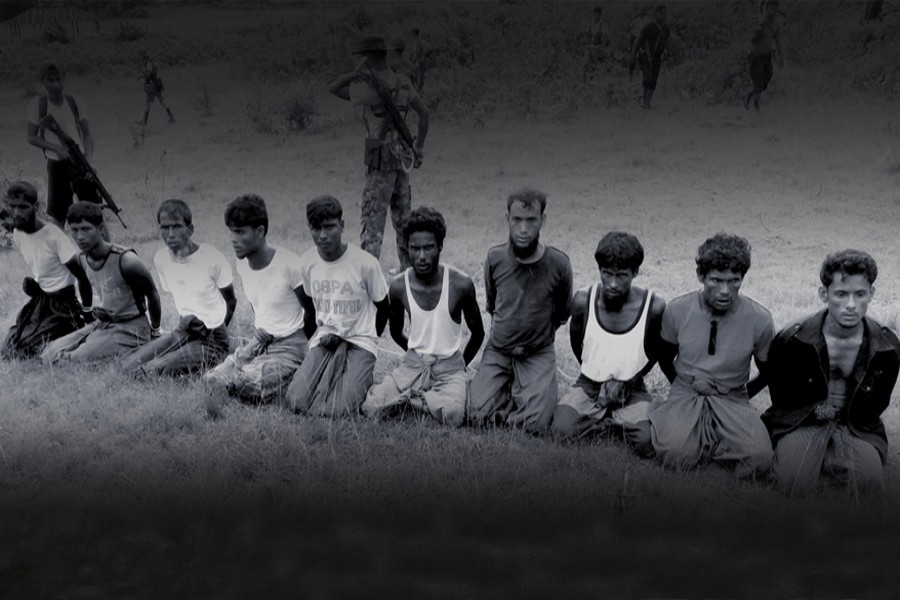
Published :
Updated :

Bound together, the 10 Rohingya Muslim captives watched their Buddhist neighbours dig a shallow grave. Soon afterwards, on the morning of September 2, all 10 lay dead. At least two were hacked to death by Buddhist villagers. The rest were shot by Myanmar troops, two of the gravediggers said.
“One grave for 10 people,” said Soe Chay, 55, a retired soldier from Inn Din’s Rakhine Buddhist community who said he helped dig the pit and saw the killings. The soldiers shot each man two or three times, he said. “When they were being buried, some were still making noises. Others were already dead.”
The slain men’s families, now sheltering in Bangladesh refugee camps, identified the victims through photographs shown to them by Reuters. The dead Inn Din villagers were fishermen, shopkeepers, the two teenage students and an Islamic teacher.
The Reuters investigation of the massacre was what prompted Myanmar police authorities to arrest two of the news agency’s reporters. The reporters, Burmese citizens Wa Lone and Kyaw Soe Oo, were detained on December 12 for allegedly obtaining confidential documents relating to Rakhine.
Then, on January 10, the military issued a statement that confirmed portions of what Wa Lone, Kyaw Soe Oo and their colleagues were preparing to report, acknowledging that 10 Rohingya men were massacred in the village. It confirmed that Buddhist villagers attacked some of the men with swords and soldiers shot the others dead.
Buddhist villagers interviewed for this article reported no attack by a large number of insurgents on security forces in Inn Din. And Rohingya witnesses told Reuters that soldiers plucked the 10 from among hundreds of men, women and children who had sought safety on a nearby beach.
Asked about the evidence Reuters has uncovered about the massacre, government spokesman Zaw Htay said, “We are not denying the allegations about violations of human rights. And we are not giving blanket denials.” If there was “strong and reliable primary evidence” of abuses, the government would investigate, he said. “And then if we found the evidence is true and the violations are there, we will take the necessary action according to our existing law.”
When told that paramilitary police officers had said they received orders to “clear” Inn Din’s Rohingya hamlets, he replied, “We have to verify. We have to ask the Ministry of Home Affairs and Myanmar police forces.” Asked about the allegations of looting by paramilitary police officers, he said the police would investigate.
He expressed surprise when told that Buddhist villagers had confessed to burning Rohingya homes, then added, “We recognise that many, many different allegations are there, but we need to verify who did it. It is very difficult in the current situation.”
Zaw Htay defended the military operation in Rakhine. “The international community needs to understand who did the first terrorist attacks. If that kind of terrorist attack took place in European countries, in the United States, in London, New York, Washington, what would the media say?”
Rohingyas trace their presence in Rakhine back centuries. But most Burmese consider them to be unwanted immigrants from Bangladesh; the army refers to the Rohingyas as “Bengalis.”Nearly 690,000 Rohingya Muslims have fled their villages and crossed the border into Bangladesh since August.
In recent years, sectarian tensions have risen and the government has confined more than 100,000 Rohingyas in camps where they have limited access to food, medicine and education.


 For all latest news, follow The Financial Express Google News channel.
For all latest news, follow The Financial Express Google News channel.